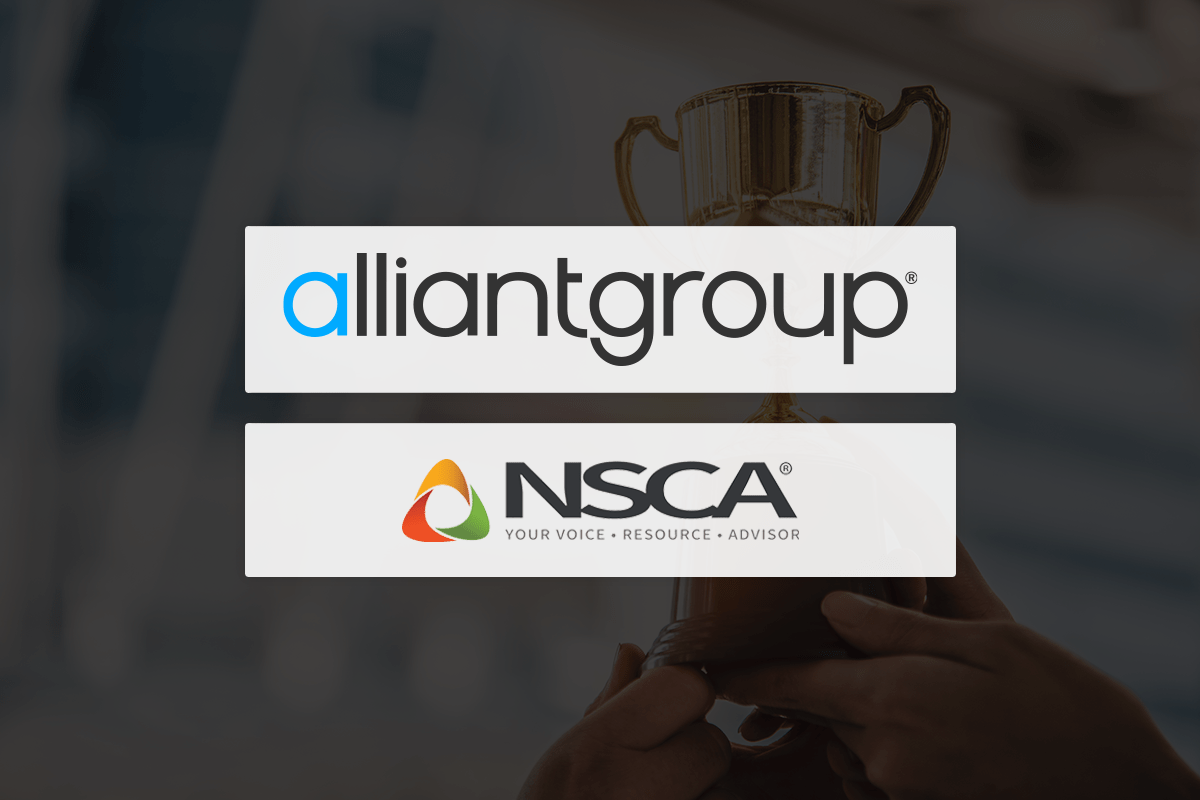[vc_row bg_type=”bg_color” bg_color_value=”#f5f5f5″ css=”.vc_custom_1618938311697{margin-top: 0px !important;margin-right: 0px !important;margin-bottom: 0px !important;margin-left: 0px !important;padding-right: 1em !important;padding-left: 1em !important;}”][vc_column][vc_column_text el_class=”article-info”]An interview by Jerome Knyszewski
May 14, 2021 | published in AuthorityMagazine.com[/vc_column_text][/vc_column][/vc_row][vc_row][vc_column][vc_empty_space height=”15px”][vc_column_text]
As a part of our series about the five things you need to successfully manage a large team, I had the pleasure of interviewing Dhaval Jadav.
Dhaval Jadav co-founded alliantgroup in 2002 and serves as the firm’s CEO. As a tax and management consulting firm with a mission to strengthen American businesses through reinvestment in innovation and job growth, alliantgroup has helped 20,000+ businesses claim more than $13 billion in credits and incentives. Prior to alliantgroup, Jadav held positions in both the public and private sectors, working for Deloitte & Touche and for the Internal Revenue Service in their Houston District Counsel office. The son of immigrants, Jadav feels fortunate to have grown up in the U.S. with the world’s top education opportunities. He attended Georgetown University Law Center and received his degree in taxation.
[/vc_column_text][/vc_column][/vc_row][vc_section][vc_row][vc_column el_id=”quote-box”][vc_empty_space height=”22px”]
“Collaboration is second nature to both teams now, and they all see the value they provide to each other to produce the most compelling package for prospective clients. We had our best year ever, and the synchronization of these two teams was a major reason for our success.”
Dhaval Jadav
alliantgroup CEO[vc_empty_space height=”42px”][/vc_column][/vc_row][/vc_section][vc_row disable_element=”yes”][vc_column][vc_custom_heading text=”“Collaboration is second nature to both teams now, and they all see the value they provide to each other to produce the most compelling package for prospective clients. We had our best year ever, and the synchronization of these two teams was a major reason for our success.“” font_container=”tag:div|font_size:25px|text_align:left|color:%230a0a0a|line_height:1.3em” google_fonts=”font_family:Montserrat%3Aregular%2C700|font_style:700%20bold%20regular%3A700%3Anormal”][/vc_column][/vc_row][vc_row][vc_column][vc_empty_space height=”15px”][vc_custom_heading text=”Thank you so much for doing this with us! What is your “backstory”?” font_container=”tag:div|font_size:22px|text_align:left|color:%23000000|line_height:1.2em” google_fonts=”font_family:Montserrat%3Aregular%2C700|font_style:700%20bold%20regular%3A700%3Anormal”][vc_empty_space height=”10px”][vc_column_text]
My story really starts with my parents. They came here from India looking for the American Dream. Growing up, I did all the things you were supposed to do — went to college, law school, and got a good paying job at the biggest consulting firm in the world. But somehow, this just wasn’t enough for me. I wanted to do more, be more. I didn’t just want to be another faceless employee. So, I came up with what I thought was a good idea, that was promptly shut down.
After that, my friend and co-founder, Shane Frank, and I quit our consulting jobs and started alliantgroup in a 2-bedroom apartment from scratch. Now, I’m proud to say we’ve built a $2 billion company. The decision to start alliantgroup wasn’t just about proving everyone wrong — instead, it was about showing everyone that there’s a better way to motivate people and encourage the best talent and ideas. Sure, we made mistakes along the way, but we’re always improving, and we believe our management system is a core element of our success. While some of our competitors struggled amidst the pandemic, we had our best year ever.
[/vc_column_text][/vc_column][/vc_row][vc_row][vc_column][vc_empty_space height=”25px”][vc_custom_heading text=”Can you share the most interesting story that happened to you since you started your career?” font_container=”tag:div|font_size:22px|text_align:left|color:%23000000|line_height:1.2em” google_fonts=”font_family:Montserrat%3Aregular%2C700|font_style:700%20bold%20regular%3A700%3Anormal”][vc_empty_space height=”10px”][vc_column_text]The most interesting insight I learned early in my career was that being a CEO does not mean you have to come up with the most brilliant strategy and constantly outsmart your competitors. Of course, that helps you along the way, but the big revelation I had was that finding great talent and creating a culture of empowerment is the true measure of success as a CEO. Management’s sole job should be to make sure your employees are having the best experience. It sounds cliché, but a people-first mindset that encourages growth, success and a fun, family environment is not only critical but, in my opinion, more important than traditional notions of strategy.[/vc_column_text][/vc_column][/vc_row][vc_row][vc_column][vc_empty_space height=”25px”][vc_custom_heading text=”Can you share a story about the funniest mistake you made when you were first starting? Can you tell us what lesson you learned from that?” font_container=”tag:div|font_size:22px|text_align:left|color:%23000000|line_height:1.2em” google_fonts=”font_family:Montserrat%3Aregular%2C700|font_style:700%20bold%20regular%3A700%3Anormal”][vc_empty_space height=”10px”][vc_column_text]It was not funny to realize it at the time, but in hindsight, a naïve assumption I made early on in my career was that as long as we deliver dollars and value to clients, they would be happy with our services no matter what mistakes we made along the way. Well, nothing could have been further from the truth! The most important thing to clients is their personal experience with a company. I often tell senior management to ask themselves, “Did your client have an experience with us that made them a raving fan?” To me, that stellar service supersedes all else. Even if you deliver tremendous monetary value to your clients but miss deadlines and have poor communication, then you’ll be an expendable commodity as opposed to an invaluable service. More often than not in this case, clients will jump to a competitor at the first excuse they get. At alliantgroup, this is so important that we’ve actually included the “Raving Fan Mission” as one of our cultural values.[/vc_column_text][/vc_column][/vc_row][vc_row][vc_column][vc_empty_space height=”25px”][vc_custom_heading text=”Ok, let’s jump to the core of our interview. Most times when people quit their jobs they actually “quit their managers”. What are your thoughts on the best way to retain great talent today?” font_container=”tag:div|font_size:22px|text_align:left|color:%23000000|line_height:1.2em” google_fonts=”font_family:Montserrat%3Aregular%2C700|font_style:700%20bold%20regular%3A700%3Anormal”][vc_empty_space height=”10px”][vc_column_text]
There is a lot involved in retaining your best talent. There’s no fool-proof way to do so, but I’ve found that implementing a couple key management strategies can make a big impact.
First, you have to make sure that you publicly recognize your high performers and validate the good work that your best people are doing. Most companies forget to publicly acknowledge these individuals, causing the most valuable employees to leave quickly.
Likewise, you have to constantly push and challenge your high performers. Too often, I see motivated and talented people get so good at their current position that they grow bored of their daily work. To combat this, we’re constantly trying different things to keep our top people engaged. If you create an atmosphere of healthy competition, your top performers will be motivated by each other. You definitely don’t want to foster a cutthroat workplace, but you do want an environment where people are constantly putting forth their best effort to match their fellow employees. Likewise, it’s important that those at the top of the ladder are spending ample time developing the people beneath them to be the next leaders.
Removing gatekeepers is also key. Your best talent are going to have great ideas, and if those ideas are not heard or entertained, that talent will leave. I make it a point to have roundtables with my top performers across the firm so I can personally hear their ideas and thoughts. The best ideas don’t come from me or the C-suite members who have been here for 20 years, they always come from the fresh, hungry individuals.
I’m also all about putting your people first. Most companies will say they do this, but for them it means getting a new soda machine or providing lunch once a week. For me, it’s about knowing what motivates every person in the company. What are their hopes and dreams? What does fulfillment look like for them? If I know that, I can personally help them achieve their professional goals. Most importantly, when I look at my colleagues, I don’t see only ‘employees’ — I see the friends and family that have banded together to complete a mission and have fun while doing it.
[/vc_column_text][/vc_column][/vc_row][vc_row][vc_column][vc_empty_space height=”25px”][vc_custom_heading text=”How do you synchronize large teams to effectively work together?” font_container=”tag:div|font_size:22px|text_align:left|color:%23000000|line_height:1.2em” google_fonts=”font_family:Montserrat%3Aregular%2C700|font_style:700%20bold%20regular%3A700%3Anormal”][vc_empty_space height=”10px”][vc_column_text]
This is definitely not easy, but I’ll give a recent example where we synchronized a couple large teams at alliantgroup. In general, we solve internal conflicts by bringing everything back to our core values. Every company should lay out these values that define their culture of success, and these tenants should be the bedrock of your management strategy. Collaboration is one of our core values because it has helped lead us to where we are today.
It seems like common sense, but the reality is when groups and people are not working well together, it’s often because they’re not listening to each other and acknowledging all thoughts, ideas and emotions involved. This is the main issue that I find leads to poor communication and creates rifts between divisions. People need to have their voices and ideas heard. It’s that simple.
Recently, there was a conflict between our marketing and sales teams. To resolve the issue, I started with what we called “big picture” meetings. We had the directors from the business development team and the leaders from the marketing department get together to talk high-level about the benefits of the two teams collaborating. This process didn’t start especially smooth — there was lots of finger pointing and arguing about who should be more responsible for making successful collaboration happen. Despite the conflict, I think it’s much better to have those uncomfortable conversations as soon as possible so both teams can move past them just as quickly. It took a couple more tense meetings, but after a few weeks we had all worked out a scheme of regular meetings to make collaboration between the two sides habitual and helpful.
Collaboration is second nature to both teams now, and they all see the value they provide to each other to produce the most compelling package for prospective clients. We had our best year ever, and the synchronization of these two teams was a major reason for our success.
[/vc_column_text][/vc_column][/vc_row][vc_row][vc_column][vc_empty_space height=”25px”][vc_custom_heading text=”Here is the main question of our discussion. Based on your personal experience, what are the “5 Things You Need To Know To Successfully Manage a Team”. (Please share a story or example for each, Ideally an example from your experience)” font_container=”tag:div|font_size:22px|text_align:left|color:%23000000|line_height:1.2em” google_fonts=”font_family:Montserrat%3Aregular%2C700|font_style:700%20bold%20regular%3A700%3Anormal”][vc_empty_space height=”10px”]
- Know the elements of your success. I think it is critical that you define the values that got you to where you are and enshrine them as part of your culture. Why stop doing what works? The important part here is to continually foster conversations about the values that work to maintain consistency. One of our core values is high performance, and I remember having a meeting where we discussed how everyone should constantly strive to maintain a certain level of excellence. It turned out that not everyone in the meeting actually agreed on what “excellence” means! As a result, we decided to continually discuss and evolve our commonly defined level of excellence and when everyone got on the same page, I found that teams started discussing these excellence standards without management having to lead the conversations.
- Emphasize transparency. In most workplaces, people are afraid to say what is really on their minds. Maybe they’re afraid of retribution or hurting someone’s feelings. But if you never hear what your team really thinks, how can you address their concerns? If you make open and honest dialogue a regular part of your culture, you’ll get to the bottom of issues much quicker. For example, one of our junior staff members spoke up about how the gifting program for our CPA partners was actually quite time consuming without yielding tangible returns. While some of our directors pushed back initially based on company traditions, they eventually saw the value in her suggestion and worked together to institute a more beneficial program. That junior staff member is now our top performing sales director.
- Constantly offer and elicit feedback. At most companies, managers will sit in their offices all day, every day and then at the end of each quarter have an employee review. If you really care about your employees and making sure they’re doing the best work possible, you need to constantly be giving them feedback and asking for feedback on how you can do better. This feedback needs to be constructive, and managers need to be constantly offering adjustments and pathways to success. We recently hired this new writer who was asked to draft a technical article. This was new to him, and his manager had significant edits on the first draft. Instead of ending the feedback there, this manager offered a clear plan for improving the piece and his writing style. At the end of this process, the writer had tears in his eyes and said, “I’m just so happy because no company has ever cared enough to want to make me better.”
- Make collaboration a cornerstone of your culture. It’s really easy for your workers to silo themselves, put their heads down and just do work. But the fact is, you’ll probably be able to solve problems faster with help. Often, what you produce on your own can be so much better if you work with other people.
- Investing in your employees should be your top priority. You’re always going to have ambitious employees with great ideas, and if you don’t spend time growing and nurturing their passions, they will almost certainly bring their ideas and talent elsewhere. As a part of the management team, you have to spend time with your employees to find out who they are and what motivates them. I see it all the time, quiet people who don’t think that it’s “their place” to speak up, even when they’re right. But, if you invest in your team, you’re going to be able to turn quiet people into leaders who will then help you invest in others. When everyone in the company feels like their managers are invested in their success, you’ll have a building full of motivated people.
[/vc_column][/vc_row][vc_row][vc_column][vc_empty_space height=”25px”][vc_custom_heading text=”What advice would you give to other CEOs or founders to help their employees to thrive?” font_container=”tag:div|font_size:22px|text_align:left|color:%23000000|line_height:1.2em” google_fonts=”font_family:Montserrat%3Aregular%2C700|font_style:700%20bold%20regular%3A700%3Anormal”][vc_empty_space height=”10px”][vc_column_text]My big piece of advice to founders and CEOs is to establish a set of core values that everyone should live by, and above all else have a people-first mindset. What I mean by that is cultural tenants that define what success looks like for everybody in the firm. We use our core values to manage teams, identify issues, provide upward mobility for our top performers, and gauge performance levels. When employees understand that your company’s core values represent their pathway to growth and advancement, you really start to see which individuals stand out from the rest. Always keep in mind the definition of culture: a commonly held set of values and beliefs. If only management believes in your core values, then they won’t have much of an impact. A company’s people must embrace and enforce the culture, not just management.[/vc_column_text][/vc_column][/vc_row][vc_row][vc_column][vc_empty_space height=”25px”][vc_custom_heading text=”You are a person of great influence. If you could inspire a movement that would bring the most amount of good to the most amount of people, what would that be? You never know what your idea can trigger.” font_container=”tag:div|font_size:22px|text_align:left|color:%23000000|line_height:1.2em” google_fonts=”font_family:Montserrat%3Aregular%2C700|font_style:700%20bold%20regular%3A700%3Anormal”][vc_empty_space height=”10px”][vc_column_text]
I am extremely passionate about STEM education. It concerns me that America is becoming an economy of middlemen — lawyers and bankers putting money in one pocket and handing money out of the other. I’m not saying we don’t need those professions, but what we need are true innovators. We need to be sure the next Apple, Microsoft, and Facebook also come from America. Unfortunately, there is a significant shortage of STEM graduates. Our clients tell us all the time that they still struggle to hire the technical talent they need.
Each year, I help our clients and industry partners at alliantgroup work with their local schools and technical colleges to create a future pipeline to STEM talent. To do so, we give away about a quarter of a million dollars in science, technology, engineering, and mathematics (STEM) scholarships.
[/vc_column_text][/vc_column][/vc_row][vc_row][vc_column][vc_empty_space height=”25px”][vc_custom_heading text=”Can you please give us your favorite “Life Lesson Quote”? Can you share how that was relevant to you in your life?” font_container=”tag:div|font_size:22px|text_align:left|color:%23000000|line_height:1.2em” google_fonts=”font_family:Montserrat%3Aregular%2C700|font_style:700%20bold%20regular%3A700%3Anormal”][vc_empty_space height=”10px”][vc_column_text]
I have two favorite quotes that I live by, and both have informed my management strategy.
“Excellence is Excellence’s only companion.”
“Until one is committed, there is hesitancy, the chance to draw back, always ineffectiveness. Concerning all acts of initiative & creation, there is one elementary truth the ignorance of which kills countless ideas and splendid plans; that the moment one definitely commits oneself, then providence moves too. All would never otherwise have occurred. A whole stream of events issues from the decision, raising in one’s favor all manner of unforeseen incidents and meetings and material assistance which no man could have dreamed would have come his way. Whatever you can do or dream you can, begin it. Boldness has genius, power and magic in it. Begin it now.” — Goethe
[/vc_column_text][/vc_column][/vc_row][vc_row][vc_column][vc_empty_space height=”25px”][vc_custom_heading text=”Thank you for these great insights!” font_container=”tag:div|font_size:22px|text_align:left|color:%23000000|line_height:1.2em” google_fonts=”font_family:Montserrat%3Aregular%2C700|font_style:700%20bold%20regular%3A700%3Anormal”][vc_empty_space height=”50px”][/vc_column][/vc_row][vc_row][vc_column][vc_row_inner][vc_column_inner]
[/vc_column_inner][/vc_row_inner][/vc_column][/vc_row]

